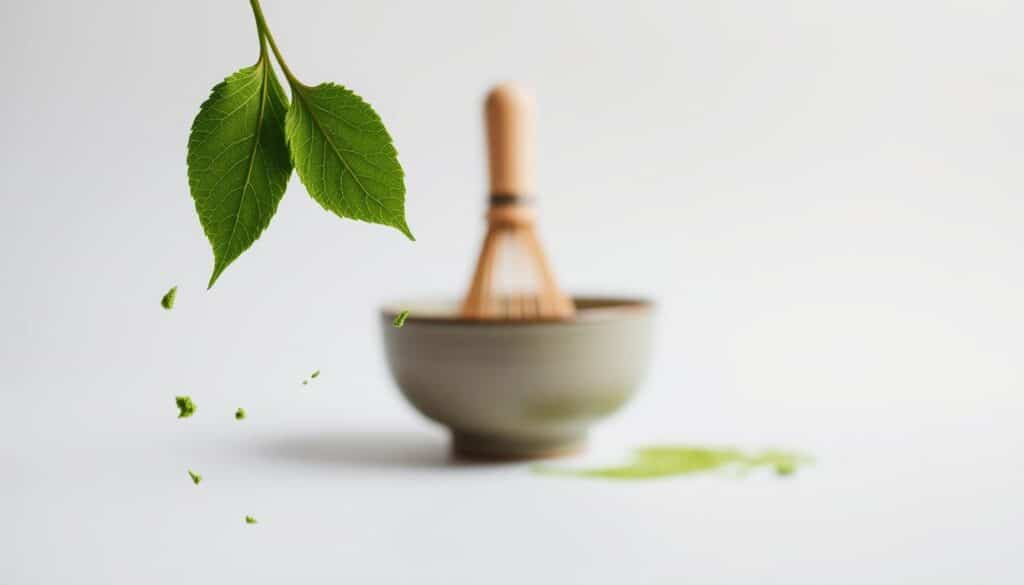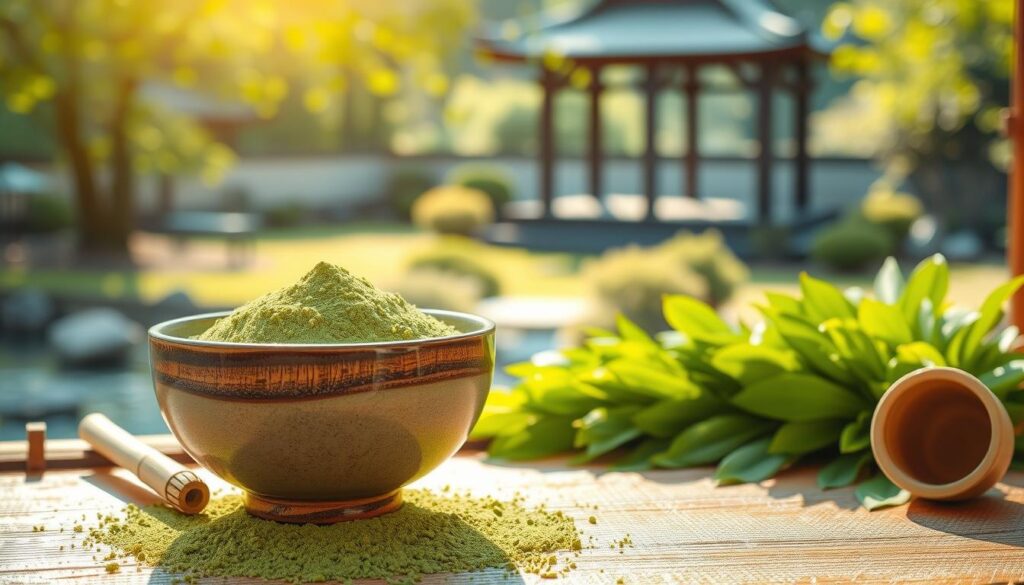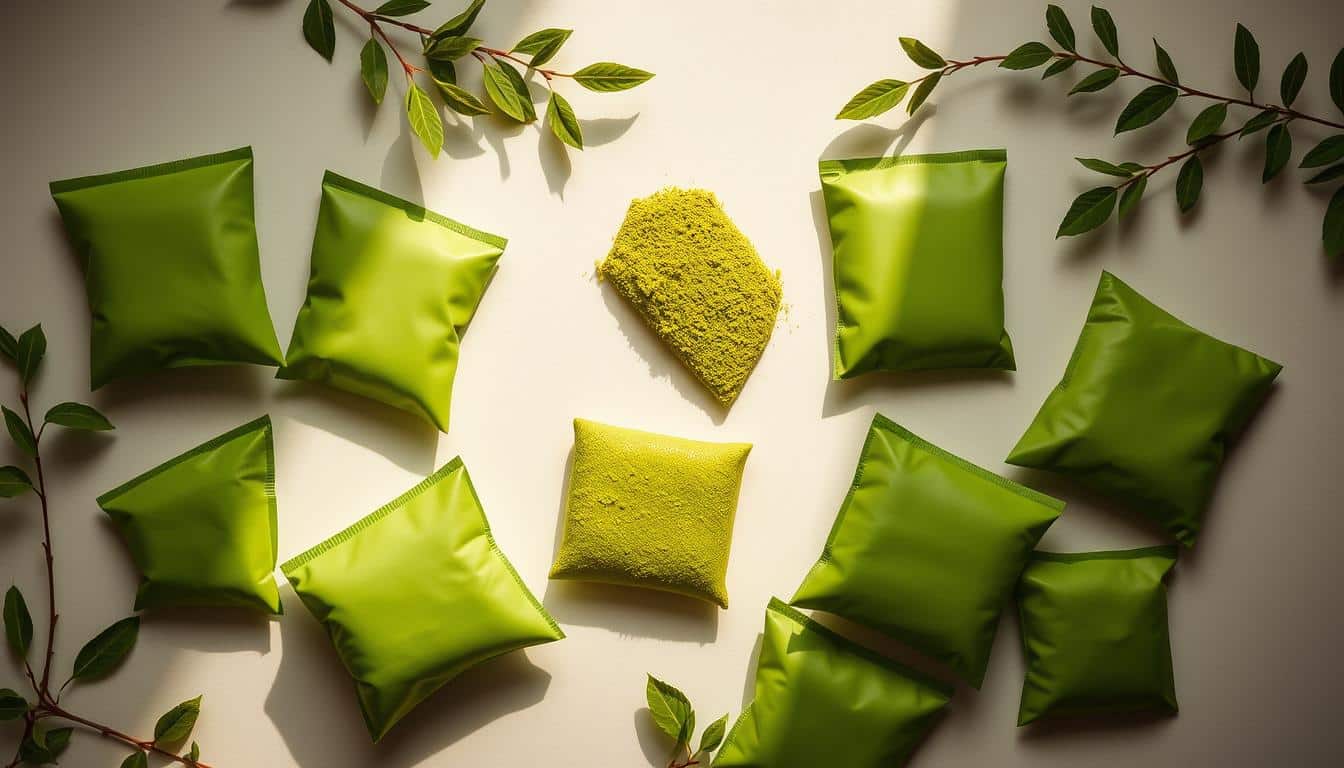What if I told you about a drink that changes your wellness journey and offers a cultural experience? Meet matcha tea bags, a superfood from the Camellia Sinensis plant’s whole leaves. It has won over ancient Japanese monks and today’s health lovers.
Picture yourself drinking matcha from the best matcha tea bags. Each sip boosts your mind and body with health perks. The creamy feel and special ways to make it take you to Japanese ceremonies. It’s more than a drink; it’s a wellness ritual. See how this green tea can be a daily part of your life, from ancient ceremonies to today’s ease.
Want to learn more? Check out these fascinating facts about matcha. They show its special qualities and many benefits.
Key Takeaways
- Matcha tea offers a blend of health and cultural experiences.
- Derived from whole leaves of the Camellia Sinensis plant.
- Rich in antioxidants and nutrients.
- Unique ceremonial preparation methods.
- Available in premium matcha tea bags for convenience.
History and Origins of Matcha Tea
Matcha tea’s story starts in ancient China. It was deeply rooted in traditional medicine and culture. The Tang Dynasty pioneered grinding dried tea leaves into a fine powder. This unique method laid the groundwork for a beloved tea worldwide.
The Early Beginnings in China
Matcha’s history goes back over a thousand years to China. In the Tang Dynasty, people started grinding tea leaves. They mixed them with water to make a flavorful drink.
The origins of matcha are tied to Chinese tea culture. Tea was seen as more than a drink. It was a way to improve health and find balance.
Transition to Japanese Culture
Buddhist monks brought this powdered tea to Japan. They valued meditation and spiritual health. In Japan, making matcha became a key part of tea ceremonies.
These ceremonies focus on mindfulness and spiritual connection. They celebrate the beauty of the present moment.
The Evolution of Preparation Methods
Preparing matcha has changed a lot since China. At first, stone mills were used to grind the leaves. This made a fine powder with a vibrant green color and rich flavor.
Today, modern grinding methods exist. But the traditional way of preparing matcha is still cherished. It keeps the timeless charm of matcha alive.
What Makes Matcha Tea Special?
Matcha tea is special because of its unique growth and preparation. It grows in shaded conditions. This boosts the chlorophyll in the leaves.
Organic matcha tea bags are special because they are ground into a fine powder. This means we get all the nutrients of the leaf. It leads to more matcha health benefits than other teas.

Matcha’s unique growth gives it a vibrant green color and strong antioxidants. People choose matcha for its health benefits. Its special growth and preparation make every sip healthy.
Health Benefits of Matcha Tea
I’m excited to share the matcha health benefits that have amazed people for ages. Matcha is more than a tasty drink; it’s packed with nutrients and antioxidants. These offer many health benefits. Let’s look at how this green tea can improve our health.
Rich in Antioxidants
Matcha is known for its high antioxidant levels, especially catechins like EGCG. These antioxidants in matcha fight off harmful free radicals. This can lower the risk of chronic diseases and boost our health. Drinking matcha tea can be a healthy choice!

Boosts Brain Function
Matcha is great for our brains. It has compounds like L-theanine that help us stay alert but calm. This amino acid boosts focus, thinking, and mood. It’s perfect for anyone who needs to stay sharp and focused.
Aids in Weight Loss
Matcha can help if you’re trying to lose weight. It has thermogenic properties that help burn calories better. Drinking matcha regularly can help with weight loss by boosting metabolism and fat burning. It’s a great way to support your health goals.
Supports Heart Health
Studies show matcha is good for our hearts. It can lower bad cholesterol and improve blood vessel health. Drinking matcha is like giving your heart extra love.
Different Grades of Matcha Tea
Matcha tea comes in various grades for different uses. Knowing these differences helps you pick the right one. Whether for a tea ceremony or cooking, there’s a matcha for you.
Ceremonial Grade Matcha
Ceremonial grade matcha is the top quality, made from the youngest leaves. It’s best for tea ceremonies, offering a smooth texture and sweet taste. Drinking ceremonial grade matcha is like tasting the hard work and care in every batch.
Its bright green color and deep umami flavor make it perfect for special times. Learn more about ceremonial grade matcha.
Premium Grade Matcha
Premium matcha tea bags are great for everyday use. They offer a rich taste that’s good hot or cold. Harvested from later buds, premium grade has a smooth and strong flavor.
Culinary Grade Matcha
Culinary matcha is for cooking and baking. It has a strong and slightly bitter taste that blends well with other ingredients. This grade is ideal for adding matcha’s unique flavor and green color to recipes.
Use it in smoothies, cakes, or savory dishes. Culinary matcha lets you add health benefits to your favorite dishes without changing their taste.
How Matcha Tea Bags are Made
The making of authentic matcha tea bags starts with picking the best tea leaves. These leaves are grown in the shade to boost flavor and health benefits. The right amount of sunlight is key—it makes the leaves green and full of nutrients.
After picking, the leaves go through a detailed matcha tea bags production process. First, they are steamed to keep them green. Then, they are dried to remove moisture. This step helps the high-quality matcha tea bags last longer.
The dried leaves are ground into a fine powder. This powder is matcha. It’s packed into tea bags to keep it fresh and healthy. This careful process makes authentic matcha tea bags special. Every step shows the quality and tradition of matcha.
How to Enjoy the Best Matcha Tea Bags
Starting your matcha tea journey is exciting, whether you’re new or experienced. To enjoy it fully, brew your matcha tea carefully.
Brewing the Perfect Cup
First, pick high-quality matcha powder. Use water that’s just below boiling, between 150 to 180 degrees Fahrenheit. This keeps its flavors delicate. Whisk well to mix the powder fully, making your tea smooth and bright.
This careful brewing makes your tea experience better. For more tips, check here.
Creative Recipes to Try
Want to try something new? Explore matcha recipes. Add matcha to smoothies, desserts, or savory dishes. Try matcha lattes, pancakes, or mochi for a fun twist.
These recipes bring a vibrant green to your cooking. They make your matcha journey more fun.
Cold vs. Hot Matcha Tea
Matcha tea works great hot or cold. A warm cup of matcha is comforting. Cold matcha is refreshing, perfect for hot days or after working out.
Both cold matcha tea and hot matcha tea keep their rich flavor and health benefits. It’s a great choice, no matter your preference.
Conclusion
Exploring matcha tea bags takes us on a journey filled with rich culture and many benefits of matcha tea. It starts in China and is loved in Japan for its special tea ceremonies. Matcha gives us a unique experience that fits well with today’s wellness goals.
Matcha tea bags are great for anyone, whether you love tea or are just starting. They make it easy to add this superfood to your day. They help make your life more balanced and healthy.
Matcha tea’s unique tastes and health perks lead to a better lifestyle. It’s rewarding and enriching. By diving into matcha tea wellness, we improve our health and well-being. Let’s keep exploring matcha, one cup at a time, and let it make our lives better.


